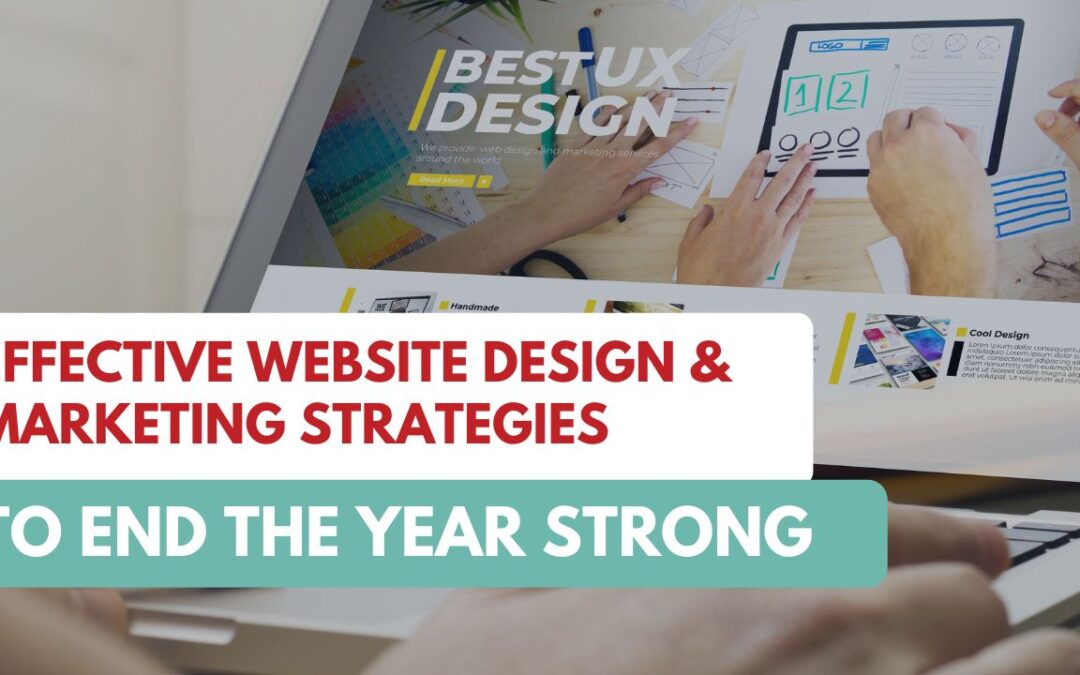Launching a Website: they will come…maybe!
When it comes to launching a website, just because you have one-doesn’t mean it’s being seen or even doing what you need it to. How frustrating right?
So what’s a business owner to do, when they’re trying to get seen online?
These days, we’re trained to Google first! Because of that we’ve at least heard of things like SEO (Search Engine Optimization), SEM (Search Engine Marketing), PPC (Pay Per Click), Keywords etc. These are all components that you can factor into your website strategy to help search engines, like Google, categorize your site and present it to users as the answer to what they’re searching for.
However, today, we’re going to talk about the strategy of launching a website that matters well before you ever get to the search engine.
Here are 3 things you need to consider when you’re first building your website.
Design
In this day and age, aesthetics are everything! We’re conditioned to like the way we feel when we enter a space- this is true online as well.
Often your website, specifically your home page, is a prospect’s first interaction with you. They want to get a sense of who you are and what it’s like to do business with you.
Overpowering colors, heavy text, disproportionate images and spacing all can be an immediate turn-off and send the user running!
Let’s think of a web home page like a front porch to your business (it’s summertime and this Atlanta girl couldn’t resist). Just like your literal front porch down here in the South, you’re likely to have a few hanging flower baskets, a welcome mat and maybe even a rocker or two.

A home page should be an invitation to get to know your business.
You’ll want a few bright, engaging pictures like hanging flower baskets.
Next, you’ll want to have a clear invitation, a welcome mat so-to-speak. Where do you want the user to go next on your site? How are they going to ‘come in’ and get to know you?
You’ll also want to invite them to ‘sit and stay a spell’ like a rocker – this can easily be an opt-in to your email newsletter and your social platforms, so you can continue the conversation even after they’ve left the website.
Make the most out of your website’s ability to be a lead, sales and credibility tool by starting with solid design.
Functionality
After you’ve addressed the site’s looks. The second important thing to consider is functionality. What do you need users to be able to do when they come to your website?
While the possibilities are almost endless these days, it doesn’t have to be complicated.
Take a moment to think about your audience and business model. Do they need to contact you from the site? Download a PDF file? Purchase a product?
Make sure that the functionality is properly built into the site. A broken link, a disconnected payment portal, or a contact form that doesn’t go anywhere, all can be the curse of death for a business trying to establish an online presence.
In addition to the functionality itself, you’ll want to make sure the path guiding them to that ‘next step’ is clear and easy to navigate. You don’t want to lose the user in the weeds of too much material that they click off to the next site before they’ve taken the next step with you.
This leads us to the next point…
Content
We hear this word a lot, and truthfully it can be vague and somewhat daunting. Content takes on so many forms these days. So, what makes good content for a website?
There are some basic things every business needs when launching its website.
The key is to have enough information about what you do so that the user is clearly able to identify you as the solution to their problem, but not get lost in the weeds of the details. Usually, a user wants details later on. That’s not to say you should keep detailed information off of your website, but you want to make sure the initial user navigation answers just what they need to know first, then gives them a clear option if they want to dig deeper.
This can take the form of content drop-down boxes, icons that allow the user to click or hover to see more, or buttons that redirect to other pages.
Make sure you’re writing content that answers questions.
This means taking the facts of what you do and writing it in a way that appeals to answering the user’s problem.
What led them to your site?
What do they need to know now?
If you can consider these three things in your website launch, it’ll be easier for users to find you and to take that next step forward so that your site is more than checking a box, it’s an effective piece of your marketing plan!
If that seems like a lot, it’s ok. It is! That’s why we have a whole web team that works with our clients on crafting individual web strategies and implementing it in the design, technical functionality and even guidance on content creation.
We’re here to help!
Ready to build the site of your dreams? Schedule a consultation with our Marketing Strategist and Manager- Tammy Lanier.
Wanting to get some guidance while you DIY? Sign up for our new program Marketing Mentor. A resource designed to help support small businesses to find success in the startup phase.
Until next time…
-Tammy




